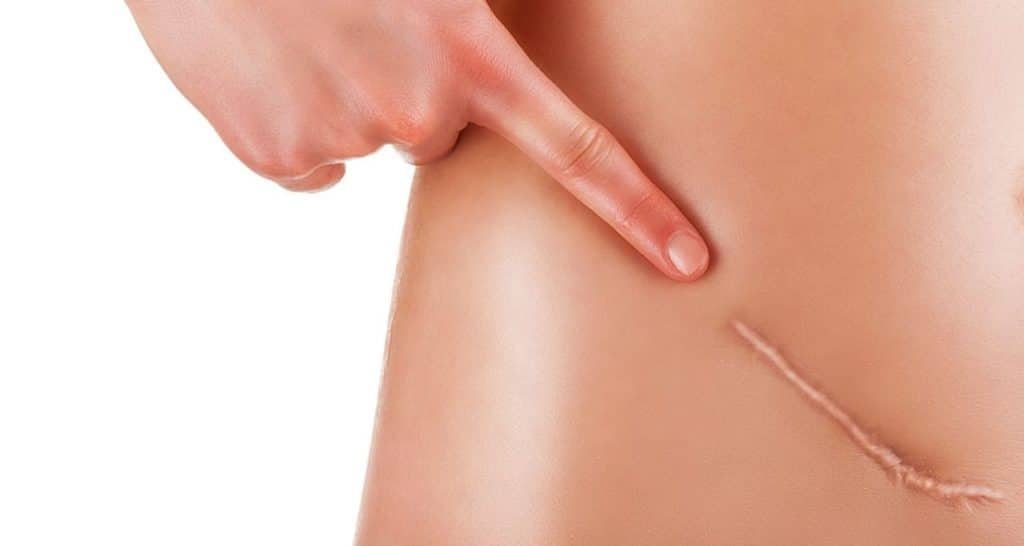Scar Revision Surgery is a cosmetic surgical procedure done to improve the appearance of scars and help them in blending with the surrounding healthy skin. Scar revision surgery doesn’t completely erase scars. It only makes them less conspicuous and subtle. This Scar Revision Surgery blog by Plastic Surgeon Dr Shrirang Pandit, will answer all your queries about what is a scar, what are the different types of scars (hypertrophic scars, keloid scars etc), what is scar revision surgery, how to take care of your scar after surgery and so on.
The skin is any person’s most exposed and visible physical aspect. As human beings we want our skin to look unblemished and pristine, but an unsightly scar could ruin even the most perfect skin!
Scars can appear anywhere on the human body since they are a by-product of injury or surgery. The size of the scars, their colour or type is all unpredictable because every injury and surgery is different and there are multiple other factors involved. No matter how the scar developed, whether due to injury or surgery, generally, patients are not happy with the appearance of a scar.
What Is A Scar?
A scar is a visible sign that remains on a person’s body after a wound has healed. The wound could be due to injury, trauma or even surgery. Scars are unavoidable in scenarios where the patient has suffered from grave injuries or major surgeries. Scars can be thick, red, raised and painful. They can be itchy or dark and pigmented. Scars can also be white and non-pigmented. Dr Shirang Pandit has seen scars which are glossy and shining or bald scars in a hairy area.
It is important for patients to note here that scarring is an inevitable part of healing.
The shape, size, colour and texture of the scar is slightly unpredictable in a lot of situations. Following are the factors that have an impact on the level of scarring:
- The location of the wound
- The amount of tissue damage
- The presence of infection
- Improper handling of wounds
- Defective wound healing tendency which leads to scar hypertrophy and keloids
Scars undergo a maturation process, and the scar finally settles in months after it first developed during the healing process. Hence, we see many patients who come to us for a long time after the scar first developed.
Are Scars Permanent?
Scars are inevitable marks caused during the process of wound healing.
It is generally observed that over the years, some scars become smooth and almost blend well with the surrounding skin.
However, this is not 100% true for all different scars. Since there are many scars that are permanent in nature and do not change in appearance over time.
What Are The Different Types Of Scars?
There are various different types of scars. Following are the names and descriptions of different types of scars:
- Acne Scars
Acne scars are a result of having severe acne problems. They may appear like deep pits or surface irregularities in the skin. Acne scars are mostly found on the face.
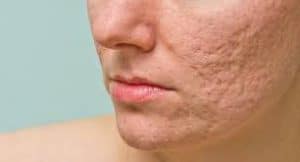
- Discolouration or Surface Irregularities Scars
These are subtle scars that cause no physical discomfort to the patient. They may appear due to minor injuries, acne or minor surgical procedures that the patient has undergone previously.
- Incision Scars
Incision scars are found at the location where the patient has previously undergone surgery. In case of plastic surgeries, Dr Shrirang Pandit explains, “For us, plastic surgeons the scar is the indelible signature of the surgeon on the patient’s body. Thus, we take every effort to make it look the best possible.”
- Hypertrophic Scars
Hypertrophic scars red coloured, thick scars, that are located on the site of the injury. They are clusters of scar tissue that widen over time but do not go beyond the boundary line of the wound. They can be hyperpigmented (darker in colour) or hypopigmented (lighter in colour). Hypertrophic scars cause physical discomfort to the patient and may hamper their daily lives.
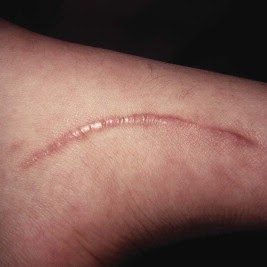
- Keloid Scars
Keloid scars are larger than hypertrophic scars and move beyond the site of the injury or incision. They disrupt the patient’s daily routine and patients may have to stop certain physical activities depending on the location of the scar. These scars are painful and itchy and need immediate medical attention.
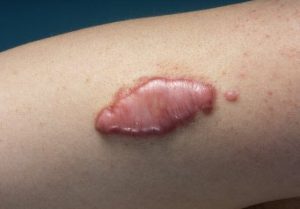
- Contracture Scars
This type of scarring is caused by burn injuries. Contracture scars are painful and lead to restricted physical movements because the skin beneath the scar tissue bunches up together. A lot of skin tissue may also be lost when healing burn injuries. Contracture scars can make the patient uncomfortable and anxious.
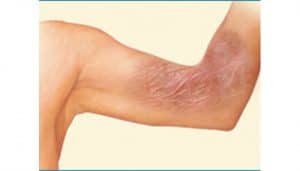
What Is Scar Revision Surgery?
Scar revision is a cosmetic surgery to improve or reduce the appearance of scars. It also restores function and corrects skin changes (disfigurement) caused by an injury, wound, poor healing, or previous surgery.
What Are The Different Types Of Scar Revision Surgeries?
- Simple Scar Revision
Simple scar revision procedures can be performed under local anaesthesia for smaller sized scars. The plastic surgeon may use dermal fillers, injectables or gels to reduce the visibility of the scar and to help it blend in with the rest of the skin. This treatment can require single or multiple sessions depending on the size of the scar.
Pandit Clinic, Pune emphasizes on good post-operative care for best results.
- Fat Grafting Scar Revision
Fat grafting is a new technique in scar revision procedures. This is also called “Autologous” fat grafting (meaning the patient’s own tissues are used in the scar revision). This treatment involves liposuction (removing fat from one part of the body) and then injecting the tissues into the scar site.
This is an effective treatment when the scars are caused due to burns or surgery, and limit the range of motion for the patient. This surgical procedure is performed under local anaesthesia.
- Skin Grafting Scar Revision
Skin grafting is similar to fat grafting. In the skin grafting procedure, the doctor will remove healthy skin from a part of your body and graft it onto the scar site. This improves the scar and blends in with the rest of the body.
Dr Shrirang Pandit recommends this procedure with patients who have scars as a result of burns or contractures.
- Z Plasty Scar Revision
Z Plasty is a reliable surgical procedure for scar revision or scar repositioning. The cosmetic surgeon who performs Z Plasty needs to be highly skilled because this procedure involves critical operating techniques.
The procedure for Z Plasty helps in lengthening the scar or breaking it and finally camouflaging it with the relaxed tension lines of the rest of the skin. The outcome of a Z Plasty is to make the scar look like a natural part of the skin. The procedure is performed under local anaesthesia.
- Keloid Scar Revision
Keloid is a type of scar that grows higher than the skin. Keloids appear after an injury has healed. They can be itchy and painful.
There are different treatment options for Keloid Scars:
Intralesional Injections – The surgeon will inject a steroid-based intralesional injection at the scar site. The steroid helps break the bonds between collagen fibres. This results in making the scarring smaller. The amount of injection will be determined based on the scar size and other health conditions of the patient.
Surgical Excision – In case of certain keloid scars the doctor may recommend surgical excision. In this treatment method, the doctor removes the keloid during a small surgical procedure and injects intralesional steroids to help in the healing.
But Keloid based scars have a probability of recurrence after treatment as well.
Does Scar Revision Surgery Work?
A pertinent question raised by most patients is “does scar revision surgery work?”
The answer is yes. Scar revision surgery helps in turning nasty looking scars into less noticeable, subtle scars.
Scar revision surgery does not eliminate scars since they are an inevitable part of healing.
How Can Plastic Surgeons Minimize Scarring?
When the scarring is a result of surgery, there are ways in which the doctor can minimize the final size of the scar. If the cosmetic surgeon can take the following steps before and after the surgery, then the scarring can be minimized.
Following are Dr Shrirang Pandit’s Signature Scar Minimization Tips for Cosmetic Surgeons:
- First off, find the correct placement for the incision before the surgery.
- Next, ensure that you are handling the tissue with utmost gentleness and care.
- As a surgeon, use only the finest suture material for your patient.
- Take all the necessary steps to avoid infection to the surgery site.
- Provide good quality wound support to the patient.
- Remove all the stitches at the correct time (estimate the correct time based on the magnitude of the surgery)
- Give local medical applications as per necessity.
- Laser and energy based devices like Erbium Yag Laser, Carbon dioxide laser, Intense Pulsed Light IPL have proved to be useful in minimizing scarring in some situations. CO2, Erbium glass and IPL treatments require several sessions and the improvement is gradual. These therapies may significantly reduce scar maturation time.
Who Is An Ideal Candidate For Scar Revision Surgery?
Scar revision procedure can be performed on people of all ages and genders. An ideal candidate for a scar revision is someone who:
- Has a scar anywhere on his/her body.
- Is bothered by the scar.
- Is physically healthy.
- Does not smoke.
- Has realistic expectations from scar revision surgery.
- Does not have acne or skin infections at the time of the surgery.
Who Is The Right Doctor To Perform Scar Revision Surgery?
Scar Revision Surgery is a significant surgical procedure because it is going to change the appearance of your scar, which has bothered you physically and mentally for a long time. Therefore, choose your doctor wisely.
Following are some pointers that might help you in your decision:
- First of all, as per the Indian Medical Association, the qualifications of the doctor should include an M.Ch in Plastic Surgery to perform a Scar Revision Procedure.
- Experience is another factor that must be taken into consideration when choosing a doctor. The higher the number of years of experience, the easier it is to trust the surgeon.
- Check what technology is available with the doctor and how well equipped his clinic is. If the doctor is using the latest technology then probably the results will be better and natural-looking.
- Review the testimonials of past patients. Most patients post their reviews on social media pages or Google or even the website of the doctor. Go through them to understand the quality of his/her work and what the ultimate results look like.
- The cost of scar revision surgery will also play a big role when choosing your doctor. Depending on the amount of money you are ready to spend, choose a surgeon who falls in your budget range.
A vital element that is often not listed, is your personal equation with the doctor. It is very important that you feel comfortable with the surgeon and trust his judgement and course of action. This comfort level is intangible and cannot be measured, but it does affect your choice and your ultimate happiness.
What To Ask Your Plastic Surgeon Before Scar Revision Treatment?
A one on one consultation with your doctor is the beginning of your relationship with your plastic surgeon. We at Pandit Clinic believe that this consultation will build a foundation of trust and setting up realistic expectations.
During your consultation, you can discuss what you expect from the scar revision procedure and how the doctor is going to help you achieve it. A thorough meeting before the procedure reduces the chances of disappointment post-treatment since you and the doctor are both on the same page with the objectives.
The doctor will take pictures of your scar site and examine the depth and severity of the scars. He/she will decide which type of Scar Revision Surgery is most suitable for you. The plastic surgeon will ask you questions about the medication you are taking currently, your lifestyle and any other medical history that he/she needs to be aware of.
Following are a few questions you can ask during the consultation:
- Am I a fit candidate for this procedure?
- What should I expect from this surgery?
- What precautions should I take in the days leading up to the Scar Revision Surgery?
- What will be my average recovery time?
- What care should I take to get optimum results from this procedure?
- What steps will I need to take to maintain my skin after the surgery?
- Are there any risks and safety concerns that I need to be aware of?
- What is the cost of the Scar Revision Surgery?
What Happens Before The Scar Revision Surgery?
The doctor will ask you to take some routine blood tests and urine tests in the week before the treatment. He may also ask you to discontinue some of your regular medicines to avoid any conflicts with the injections. If you are a smoker then you will have to give up smoking in the few weeks leading up to the procedure.
Please bring someone with you because you will need help with getting home safely.
How Does A Plastic Surgeon Remove A Scar?
The surgical procedure to improve the appearance of the scar will depend on the method that was deemed appropriate for you.
The first step is administering local or general anaesthesia. Next, based on the severity, location, type and size of the scarring, the surgeon will perform either a simple scar revision surgery, or fat grafting, or skin grafting, or use chemical peels or Z plasty.
In case the scar revision needs incision to remove a previous scar, then the cosmetic surgeon will create a new incision and remove that scar.
Once, the procedure of scar revision is performed then the surgeon will close any incisions he has made for this purpose.
How Long Does Scar Revision Surgery Take?
Generally scar revision surgery can be completed in approximately a couple of hours at the most.
However, the time required for the surgery will vary based on two factors –
- The size and position of the scar
- The surgical technique used to perform the scar revision.
Is Scar Revision Surgery Painful?
No, scar revision surgery is not a painful procedure. A Plastic Surgeon administers local or general anaesthesia on the patient at the beginning of the surgery. This ensures that the patient feels no pain or discomfort during the procedure.
What To Expect During Scar Revision Recovery?
Scar healing takes time and patience. You must not expect immediate magical results. As we have discussed above, any scar undergoes a natural maturation process before it settles. So, please give your body enough time to heal.
The scar goes through a process of resolution and maturation. It will look very good the day you have the surgery. Then there will be some swelling for a few days. The scar may become red, slightly indurated and thick. It may rise above the skin surface, this is the stage of hypertrophy. It may become itchy, at times painful. This can last up to three to four months. After this period the maturation will start, the scar will become supple. The skin will become soft and pliable and the colour of the scar will come close to normal skin.
Here’s a small list of things you can do to improve the healing:
- Keep the scar site clean
- Avoid getting injured during recovery
- The freshly repaired wound takes several weeks to gain strength, so avoid stressful activity that can put tension on the scar.
- Venture into intense physical activity or contact sports after consulting your surgeon.
- Please use your dressings, splints, compression garments as advised.
- There may be tapes placed across the scar for several weeks and they prevent the scar from stretching
- Silicone Gel and creams will improve scar appearance.
What Are The Risks Associated With Scar Revision Procedure?
Scar Revision Surgery is a safe and effective procedure. But like every medical procedure, it also has some inherent risks. It is important that as a potential patient who will be undergoing this treatment you are well aware of all the risks. We at Pandit Clinic, Pune disclose all the known risks of any procedure to our patients during their one on one consultation.
Scar revision risks include:
- Bleeding (hematoma)
- Infection
- Delayed healing
- Anaesthesia risks
- Change in skin sensation
- Damage to deeper structures including nerves, blood vessels, muscles and lungs can occur and may be temporary or permanent
- Allergies to tape, suture materials and glues, blood products, topical preparations or injected agents
- Skin contour irregularities
- Skin discolouration and swelling
- Skin sensitivity
- Deep vein thrombosis, cardiac and pulmonary complications
- Pain, which may persist
- The potential need for additional surgical procedures or staged procedures
What Is The Cost Of Scar Revision Surgery In India?
The cost of scar revision surgery in India depends on various factors such as:
- The location of the clinic
- The experience and reputation of the doctor
- Your unique case
Therefore, one cannot write down a ballpark figure for this surgery. The actual cost estimate will be given to you by your surgeon after your consultation.
Does Health Insurance Cover Scar Revision Surgery?
If your scar physically impairs you in any way, you may be able to get coverage from your health insurer. Ask your doctor to write a letter detailing your particular case. Your doctor can also take photos to support your case.
If you are undergoing scar treatment for cosmetic purposes, you will most likely have to pay for it all yourself. Unfortunately, medical insurance does not cover cosmetic surgeries.
Conclusion
In cosmetic surgery, the scar is a tradeoff. A scar is accepted as a means of beautifying another feature. These scars are located such to be hidden by hair, or clothing. The scars have to look good and it is here that the skills and experience of a seasoned plastic surgeon make all the difference.
But in case of injuries, burns or accidents a scar is not a tradeoff. It cannot be “perfectly” hidden because accidental injuries need emergency medical attention for healing and saving the body from further damage. Hence, these scars may look ugly and unsightly.
Thanks to scar revision surgery and other cosmetic application possibilities, your scar need not be a permanent part of your features. We hope this blog proved to be informational and insightful for you. Dr Shrirang Pandit will be happy to help you with any other queries or doubts you may have regarding scars and scar revision surgery. You can send in your queries at panditclinicindia@gmail.com
You Might Be Interested In
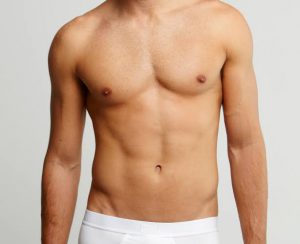
Gynecomastia Surgery: Get Rid Of “Man-Boobs” Safely!
Gynecomastia Surgery is a male breast reduction surgery done by a Plastic Surgeon to remove excess fat and breast tissue from the patient’s chest. Gynecomastia

Tongue Tie Surgery: Procedure, Risks & Surgical Methods
Tongue tie surgery is performed by Plastic Surgeon to relieve a patient born with the condition of tongue tie or ankyloglossia using surgical techniques such

Mommy Makeover
Call us +91 88059 80048 Home Plastic & Cosmetic Surgery Mommy Makeover A Mommy Makeover is one of the fastest growing set of cosmetic procedures

Non-Invasive Fat Removal
Remove Unwanted, Excess Fat Without Surgery With Latest BodyFX Technology. Call us +91 88059 80048 Home Cosmetology & Dermatology Non-Invasive Fat Reduction Remove Unwanted, Excess







